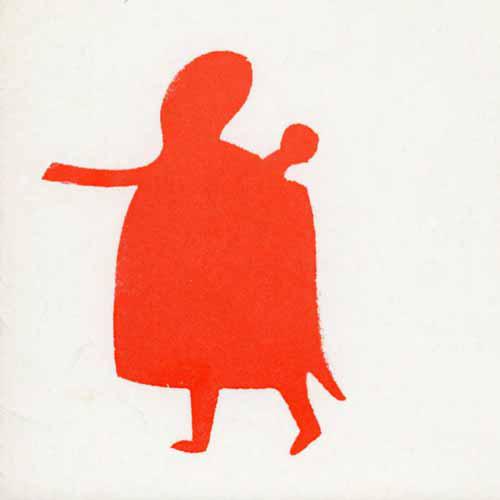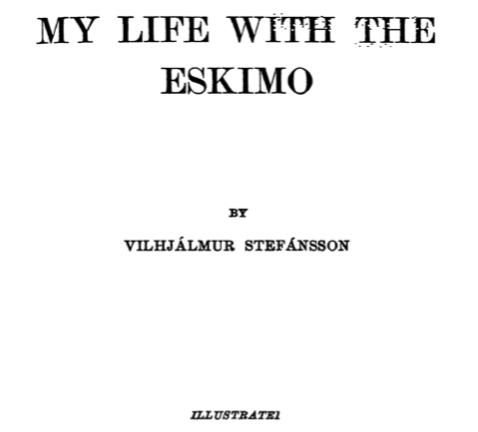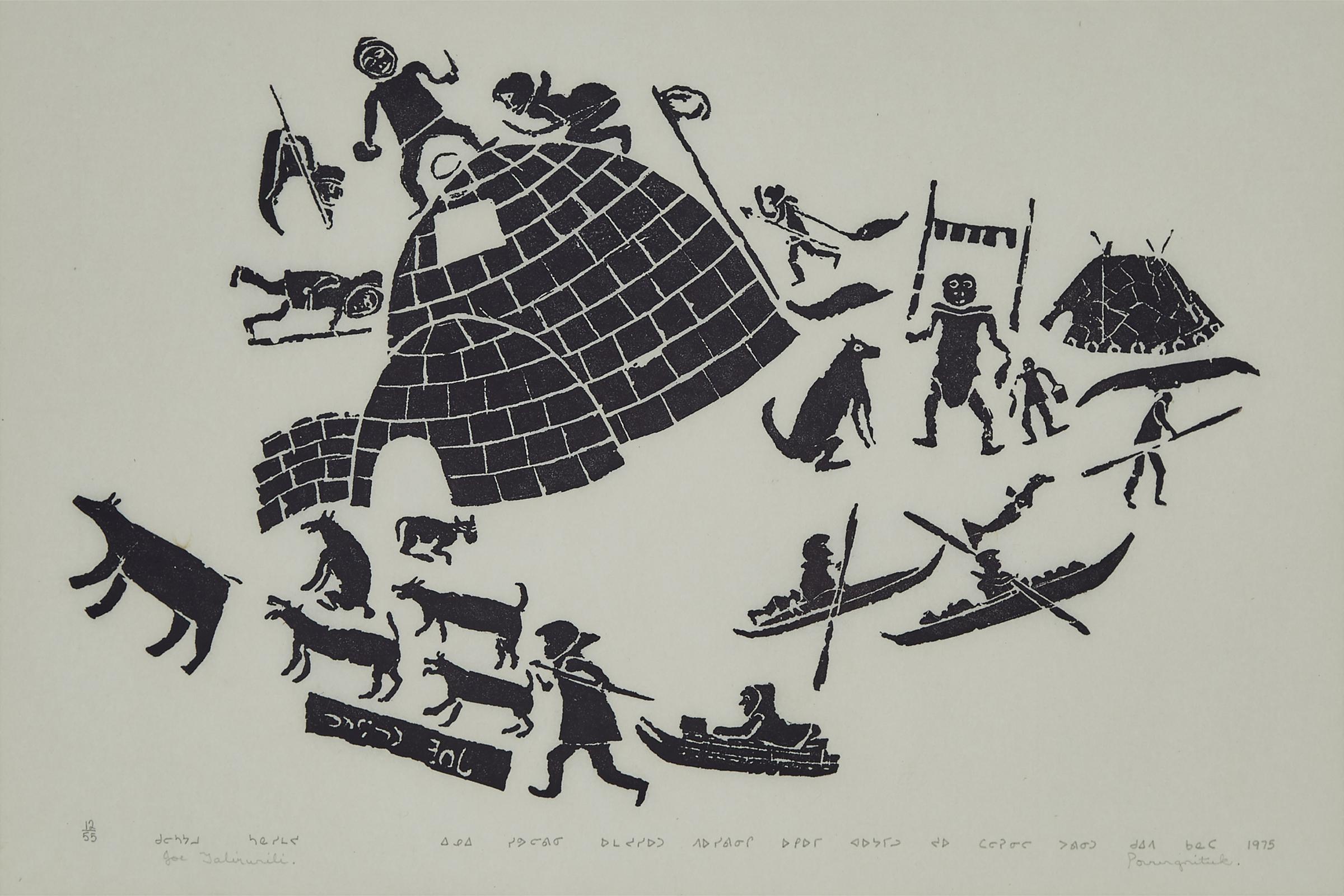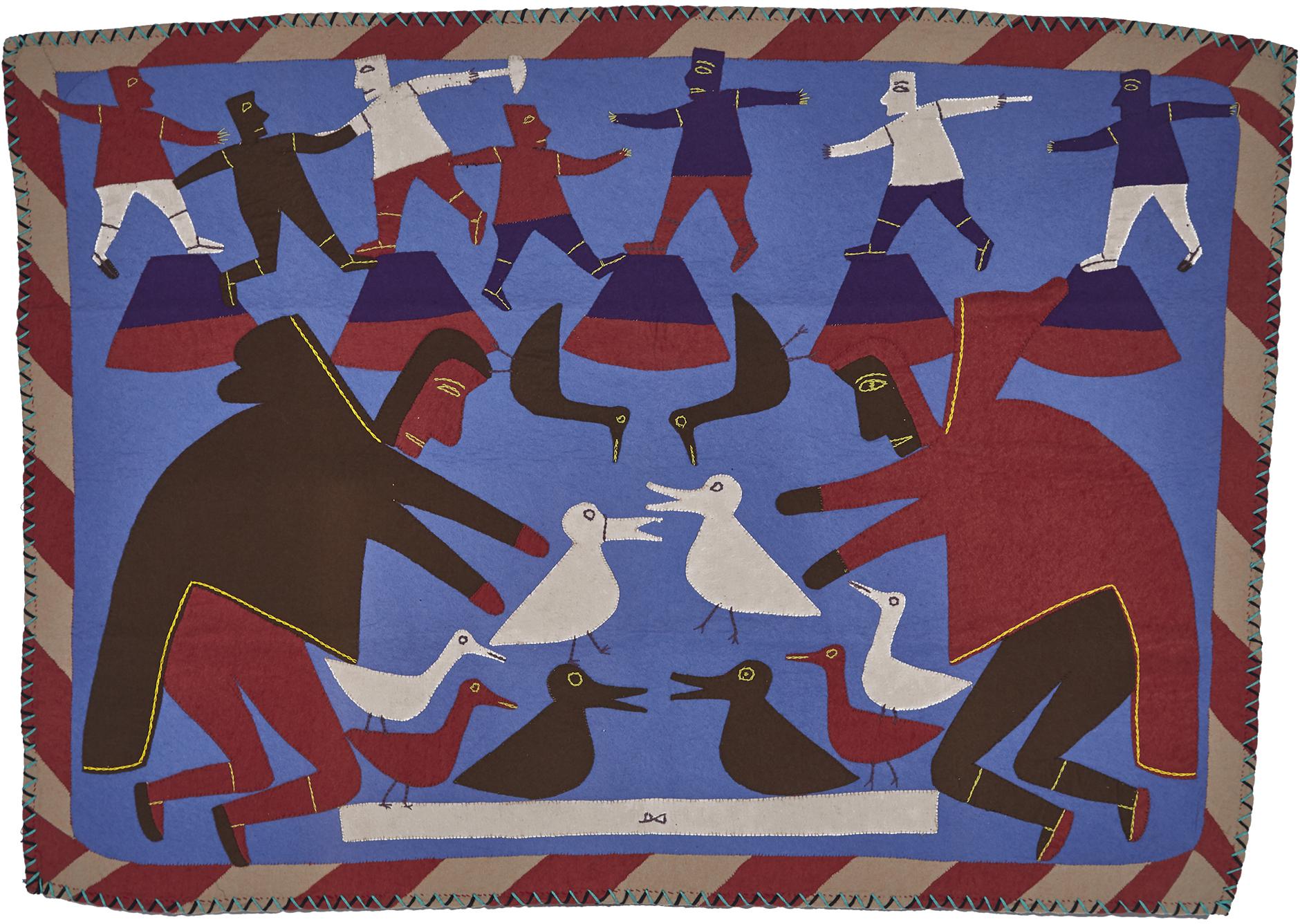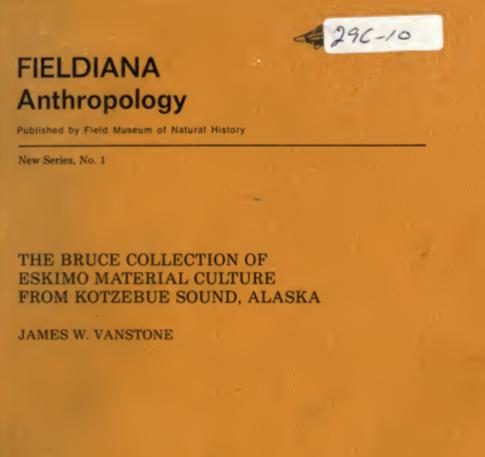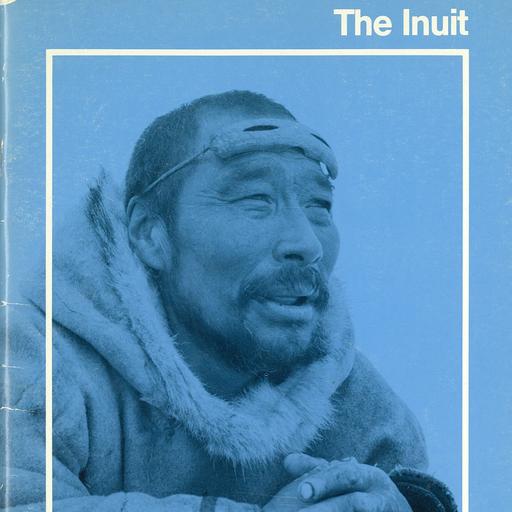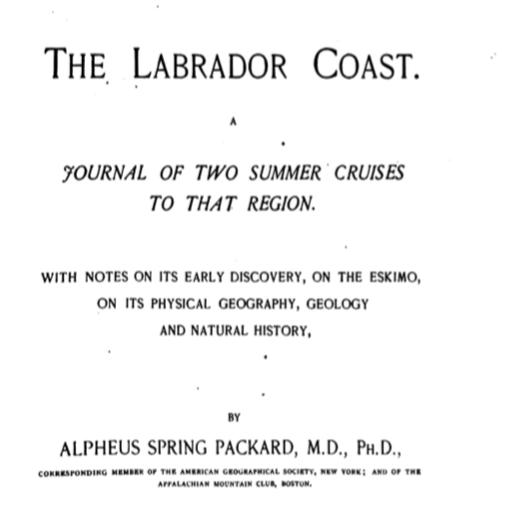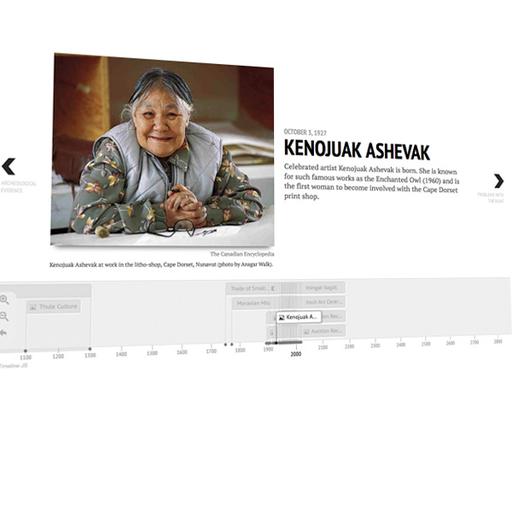Articles
Impact of the Inuit Arts economy
Contemporary Inuit arts and crafts as they exist today draw on culture and traditions that long predate settlers’ arrival in the Arctic. However, some of the production methods, distribution channels, marketing, and the place of this art among other contemporary forms of fine art can be traced to the late 1940’s when James Houston visited the Canadian Arctic.
Notes on Eskimo Art: Cape Dorset by Alma Houston
Cape Dorset, on the southwestern tip of Baffin Island, has a population of three hundred and fifty Eskimos. At high tide, Cape Dorset is an island, with rocky coastline and hills up to nine hundred feet high. The settlement is at the mouth of a large bay, which provides a good harbour for ships, and a landing piece for aeroplanes on floats in summer; in winter, ski-equipped aircraft land on the bay’s thick ice.
Povungnituk Print Making
Perhaps unfairly tainted by the peculiar name of the settlement – Povungnituk translates as 'Place where there is a smell of rotten meat' – Povungnitu
Rankin Inlet
Anonymous undated essay
On the west coast of Hudson Bay, Rankin Inlet lies 300 miles north of Churchill, Manitoba. The area near the settlement is rocky and many small lakes
Sealskins and the Eskimo Economy
Canada’s Arctic is inhabited by nearly 15,000 Eskimo people. They are in many varying stages of transition. With government programs, economic developments, improved social services and the education system, all designed to enable a higher standard of living, many are taking advantage of wage employment and changing from the old way of living on the land...
Seams of Cultural Affirmation
Women around the globe have historically used needle and thread to create works on cloth that ultimately serve as strong political aesthetic statement
